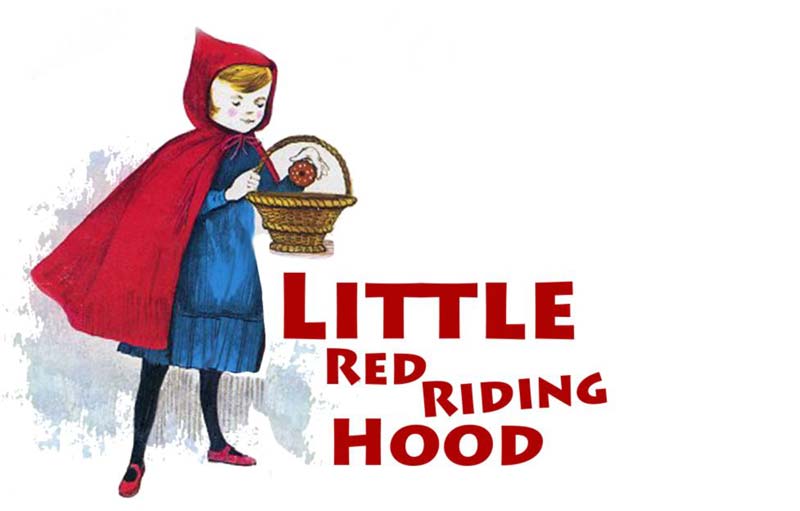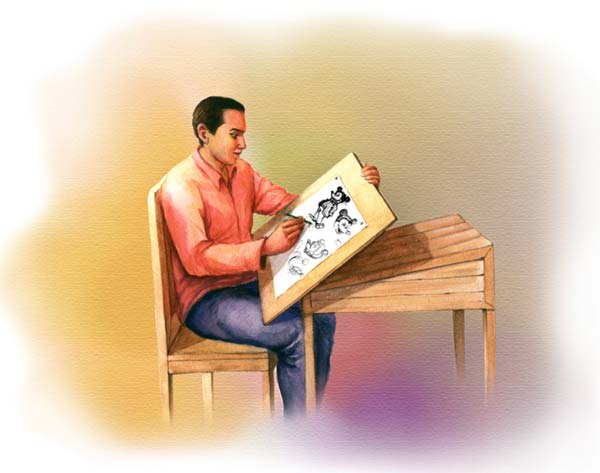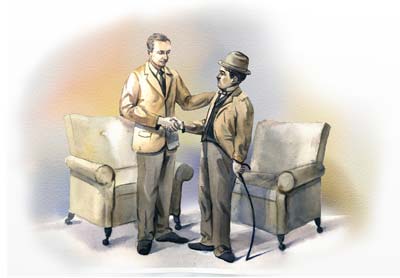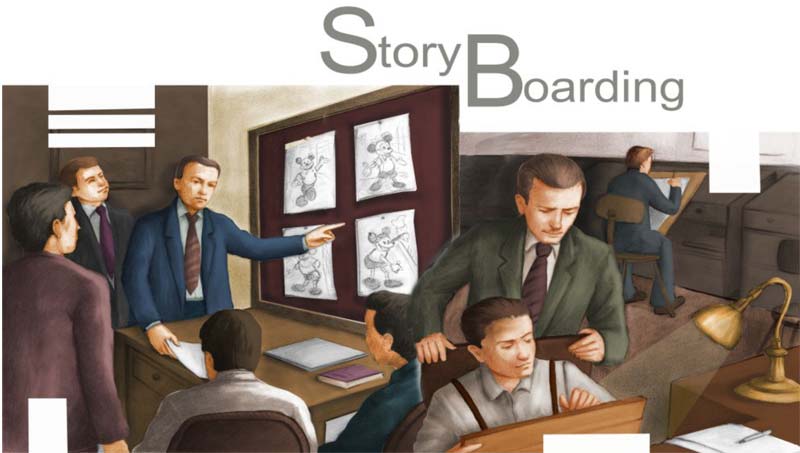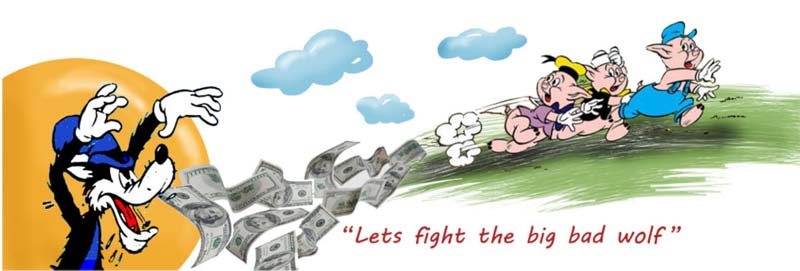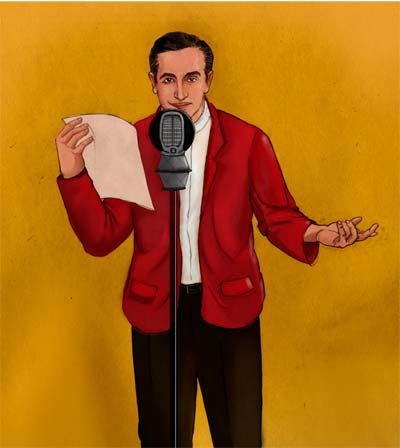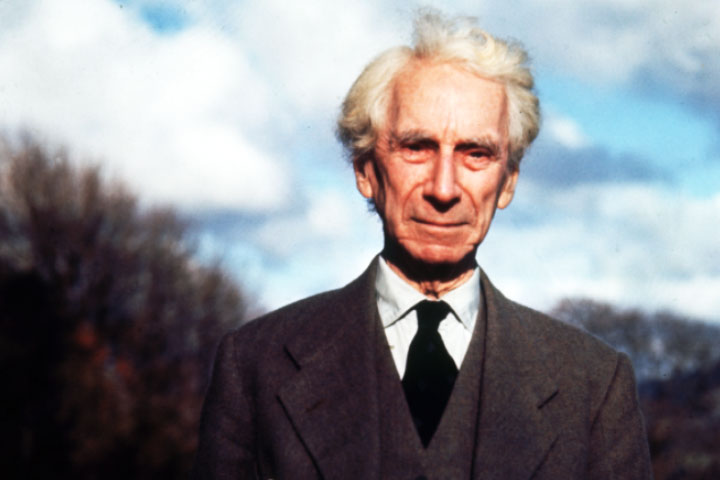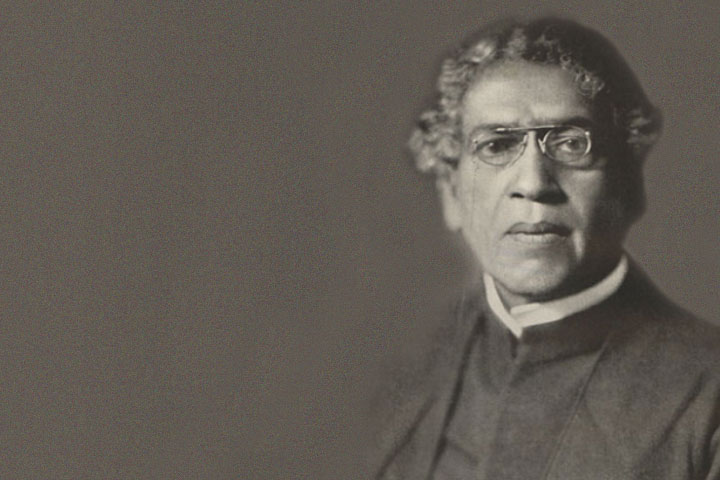
Boom! Smack! Flip! Flat! Boing! The moment we read or hear such words or sounds, our mind instantly projects an image of a cartoon, engaged in a funny business. We owe our imagination to numerous comic strips, stories, films and animation which we have seen over the years. We have grown up watching cartoons and still never miss a chance, when accidentally we come across one on TV or YouTube. There is hardly any one I have ever met, who hasn’t seen Mickey Mouse, at least in the urban world where we live in.
In the sea of several animated cartoons, Walt Disney cartoons always stand apart. The music, the fantasy, silly gags and cute little characters jumping up and down, tickle our funny bone. Disney cartoons have been around since early 1920’s, Mickey Mouse being the most loved one and famous of all. In spite of watching Walt Disney cartoons for many years, we hardly know about its creator, the Walt Disney himself.
[with drum roll] So who was he? A cartoonist? An entrepreneur? An egocentric task master? A visionary? Or simply a grown up kid? Well, let me tell you a story, Once upon a time....
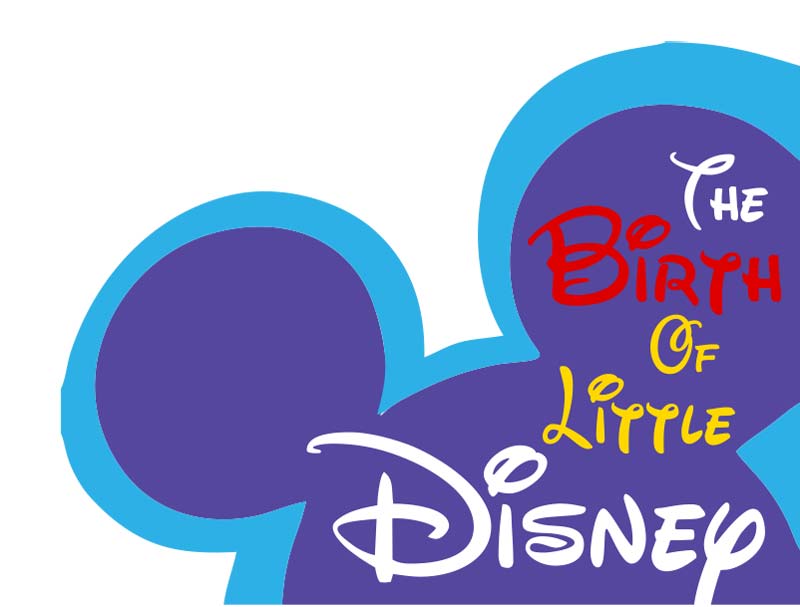
Elias Disney was a trained carpenter and an unsuccessful orange farmer, born in 1857, Canada to an Irish couple, Kepple and Mary Disney. In search of better prospects, Kepple and Mary moved with their family to Kansas in 1878. Living with his ten brothers, Elias was always craving for a better life and it was his endurance that brought him to California, where he got engaged in orange farming. It was here that he met Flora, a daughter of local farmer, who was 9 years younger to him. The couple got married in 1888 and moved to Chicago.
Walter Disney or Walt as his siblings called him, was the fourth child born to Elias and Flora Disney on December 05, 1901, in Chicago. He had three elder brothers: Herbert, Raymond and Roy. He also had a younger sister who was called Ruth. During the 20th century, Chicago was infested with gangsters, crime, poverty and corruption and living in a quiet neighbourhood was mostly haven for the Irish, Poles, Swedes, German and Scottish immigrants. Elias wanted his children to grow in a crime free society. And one such crime incident in 1905 made him leave Chicago for the sake of his children’s future. It so happened, that his next door neighbour’s sons were arrested for robbing a car and killing an on duty policeman. One of the teenage boys got death sentence and the other one was imprisoned for two decades. Elias Disney sold his house on his brother, Robert’s instance and moved to Marceline, Missouri in 1906.
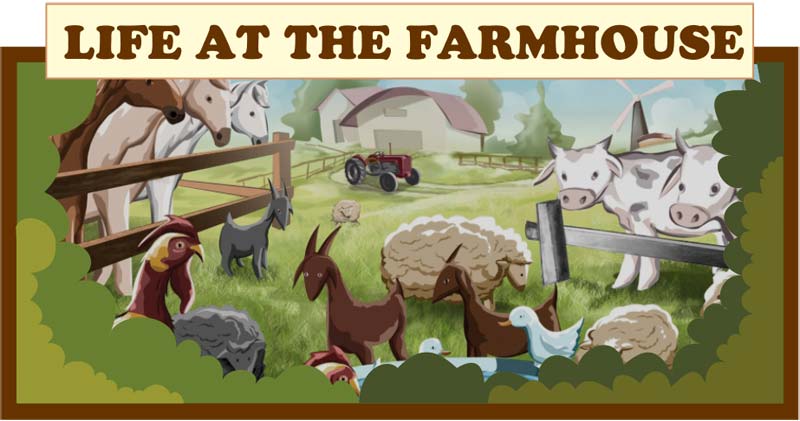
Marceline, a city built along the railroad was far from being developed. Elias purchased a 45 acre farm from a civil war veteran for $3000. The country farm was heaven for Disney kids as they never had a backyard or a playground in Chicago. The farm had orchards of apples, oranges and plums. It had a pigsty, a stable and a chicken farm also and housed hogs, chickens, horses and even cows. The town was rapidly developing by 1907 and the Disney farm even had a telephone back then. Elias knew that a growing town was ideal to start a business and earn his livelihood. He opened a diner named ‘Oyster Supper’ in the market and his oyster soup made from five gallons of raw oysters, soon became popular among the neighbourhood. The joint was mostly visited by farmers from nearby town and villages.
Elias was a hardworking, honest, decent and a religious man who lived his life without any vices. Although caring, yet Elias was a strict father and ensured his boys remained in discipline. Flora was distinctively opposite of Elias, and was a soft loving mother who enjoyed playing and cracking jokes with her kids. She brought the much needed laughter at home, which was otherwise quiet in Elias presence.
Herbert and Raymond were in their teens, when the family moved to Marceline. They ached for Chicago and hated the lonely town and their strict father. One night in 1908, the brothers escaped through their first floor bedroom window and headed straight to Chicago. They started working there as clerks in a bank. Deeply hurt and angered with his elder son’s action, Elias vented his frustration on Roy and Walt. They were also administered beating sometimes, only to be saved by their mother. Flora was not only a protective mother but also a loveable wife, who had a calming effect on Elias. To meet their family needs, Elias brought his farming skills to use, he even built a church in his neighbourhood; to get an extra income, he sold farm eggs and butter in the market. Elias always balked when Flora gave extra butter or eggs to her kids for breakfast; she applied butter on the bread and asked her kids to flip the bread downside, so that Elias couldn’t see it. This way she kept both her husband and kids happy.
Walt enjoyed being on the farm and though they never had playmates or neighbours, Walt and Roy spent hours playing with the horses and their farm pets. As a kid, Walt never faced his father’s wrath, he escaped his beatings all the time, he was lovable and Roy always made sure that his younger brother and sister had good toys to play with. Roy played the role of a protective elder brother throughout his life and the bonding between the brothers grew stronger over the years.
Since childhood Walt liked to draw and his Uncle Robert’s wife, Aunt Margret Disney always brought sketch pads and crayons for him.

His grandmother Mary was a happy go lucky woman. She enjoyed playing practical jokes with her grandkids, encouraged them to do mischief and even helped them steal fruits from the neighbouring farms. Elias made sure that his boys helped him in raising money for the family. Every morning, Roy and Walt would go to the market along with their father to sell farm apples. In 1909, Walt was enrolled in a school which was recently built, but his life came to an abrupt halt in 1910, when Elias was diagnosed with pneumonia and got bedridden for months. The money which he had made so far started depleting quickly. Seeing no way of earning his livelihood, Elias decided to sell his farm house along with the other farm assets and livestock. The decision was hard for Flora, but she always stood by her husband’s side.
In the cold mornings, Roy and Walt went from town to town sticking auction posters. On the day of the auction, the brothers were sadder than the rest of their family, as their six month old Colt was being auctioned. Later in the day, in down town the brothers saw their Colt across the street tied to a wagon and whining. Seeing their pet, the boys ran towards it and hugging the Colt they cried their eyes out. Few months later the Disney’s moved to Kansas City in 1911.
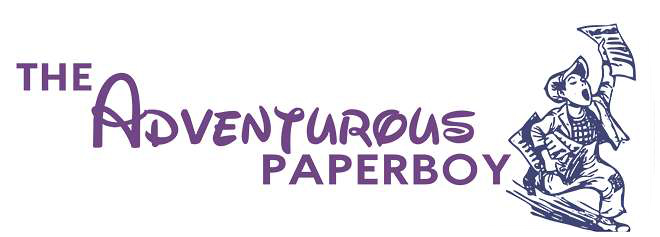
In Kansas, Elias purchased ‘KANSAS STAR DELIVERY ROUTE’ for $2100. He owned the sole rights of delivering ‘KANSAS STAR’ newspaper to 700 customers living on the route. Every day both the boys would get up at 4.30 am to deliver the newspaper in the vicinity, till their school bell rang, and after school they would deliver newspapers and butter till supper time. During those delivery works, when arriving in a wealthy neighbourhood, Walt would be fascinated with toys that the rich kids left behind on the doorsteps. He would spare some time and play with them. The electric powered and windup trains were Walt’s favourite toys and his fascination for trains remained life long. Walt enjoyed going around, door to door along with his brother Roy. In 1912, after graduating from high school, Roy took up a job at National Bank of Kansas City.
Walt continued selling newspaper for the next six years. To meet the rising demands of newspaper, Elias hired some local boys for $3-4 a week. However, when Walt asked for his wage, Elias replied very coldly, “I clothe and feed you”. Elias always cared for his sons well being and this was his way to encourage them to become independent. Walt made his own ways of earning money by delivering medicines on his newspaper route and sometimes by selling extra papers behind his father’s back. It was in 1912, facing an economic crunch Walt was pulled out from school and was made to sell butter and eggs door to door,
which were being imported from Marceline. It was a hard time for Walt to leave school and work full time with his father. On many occasions, he felt embarrassed while pushing his cart in a particular street or ally as many of his classmates lived there. But Walt never complained or showed sadness. He was always talkative and stubborn by nature. Infact, he never wanted to disrespect his father but with the beatings becoming more frequent even Walt’s patience was being pushed to the limits. In one such incident, things really got out of hand when an irritated Elias started whipping Walt just because the latter had sass mouthed him. No longer willing to endure such behaviour, Walt caught hold of his father’s hands and easily over powered him. Elias felt ashamed and left the room crying. He never hit the boys again.
Walt had acquired a self respect!
Walt had a keen desire to study and so he re-admitted himself in school and graduated from seventh grade in 1917 from Benton School along with his sister Ruth. The very same year, Elias sold ‘Newspaper Route’ and moved to Chicago. The city was by now way better a place than what it was a decade ago. Elias had been secretly investing in Jelly Company ‘O-ZELLA’ ever since 1912 and now he joined the company as a partner. Walt stayed behind with Roy in their family home with elder brother Herbert, who was now married and father of a baby girl. Walt continued selling newspaper independently and pocketed the entire profits.
In 1917, Roy was working at a Railway station store selling newspaper, candy, fruits and soft drinks for Fred Harvy Company Rail Route [Santa Fe]. Following his elder brother’s footsteps, Walt worked as a store keeper for Van Noy Interstate Company on Kansas Rail Route, using his street smarts and lying about his age that he was 16. Being inexperienced and without Roy to protect him, Walt soon ran into trouble. His customers mocked him, colleagues stole his empty soda bottles thereby reducing his profits, would switch his hamper or sometimes put a rotten fruit in his lunch pack and constantly bully him, but he was always a happy chap. Due to his pure juvenile nature he would never take things seriously, no matter how bad the situation turned out to be.
Walt left Kansas to live with his parents in Chicago and took admission in the eighth grade at McKinley High School. Elias was now financially in a better position than ever before, but he still preferred Walt to take up a job at his factory. Walt washed bottles, crushed apples, even carried pistol while working as a night watchman at the factory. Walt was only 16 and worked all the time, but it was his passion for art which arose during his stay at the farm that made him work harder. He paid his own fee for three nights a week in an art school ‘Chicago Academy of Fine Arts’. This was his only formal training in the subject, along with some training at ‘Kansas City Fine Arts Institute’. Walt put his art skills to use by drawing cartoons for his school’s monthly magazine. Apart from drawing, Walt enjoyed staging plays and short skits; he loved acting, directing and developing sets for the plays.

As a teenager, Walt always loved attention and entertaining people. He not only performed at school or home, but also acted in a short skit held at a local theater along with his neighbourhood friend Walt Pfeiffer. Apart from drawing, skits and music, Walt was also fascinated with magic tricks.
Walt never enjoyed going to school and so he dropped out in eighth grade and started looking for ways to make money. Once again, Walt lied about his age and took up a job as mail sorter at the Chicago Post Office. His day started at seven in the morning and ended in the evening. To defy his age, Walt would show up in his father’s clothes and his bluff paid off pretty well.
By 1918, Roy had joined United States Navy, and volunteered for World War I. Roy attended ‘Great Lake Naval Training Institute’, once during his visit at home. Walt was highly impressed seeing his brother in the Naval Uniform and he too made up his mind to join the Navy. However, his forms were rejected as he was under age. Walt convinced his mother to sign a bona fide certificate for him which Elias had earlier turned down. Walt wanted to officially increase his age, so he changed his birth year from 1901to 1900. Owing to this he was selected by Red Cross who were at that time recruiting 17 year olds. He soon got his passport, but due to flu epidemic his tour to Europe got delayed and by the time he reached France, the war was over. Walt’s job was now to help and mobilize sick soldiers and high esteemed officers of American Corps.
Walt spent an entire year in France, working with the Red Cross medical team and in his spare time he drew sketches of his colleagues in return for a few bucks. In France, exploring the country side, sleeping in trucks, sketching and working hard, was all part of his daily routine and he was never unhappy. Walt sent many of his drawings to magazines, which often left him sour, when he received rejection slips from the editors. The post war Europe made Walt somewhat mature. After getting discharged from the service, Walt returned to Kansas and turned down $25 a week job offer from his father at the factory as he did not want to engage in physically demanding jobs like his father. Walt’s ambition was clear; he wanted to be a cartoonist!
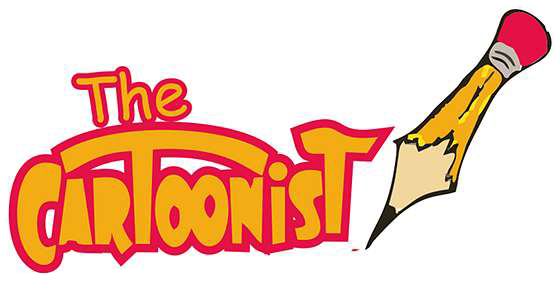
In 1919, Roy was discharged from the Navy and he took up a job in a local bank. Meanwhile, unsure of how to launch his cartooning carrier, Walt applied at Kansas Star Newspaper for a post of cartoonist, the very newspaper which he had delivered for many years before moving to Chicago. However, his application was turned down as they found Walt too mature to work as a cartoonist. In October of 1919 with Roy’s reference, Walt went to ‘Pesmen – Rubin Commercial Art Studio’ and he showed them the drawings and cartoons that he had made during his one year stint with Red Cross in Europe. Impressed by the work, Walt was selected for a junior post on a 7-day trial basis. During his working hours he never left his desk, not even for bathroom or lunch and on the final day when he submitted his work, Walt was sure that he would be fired. However, much to his amazement, he was immediately hired for $50 a week. Walt couldn’t have been happier as it was for the first time in his life that he was working full time as a cartoonist. Walt had been paid for his cartoons before, but this job was rather special as he learnt different aspects of commercial arts. However, this happiness was short lived as only a month later, the company ran into financial trouble and Walt lost his job. Leaving a dream job was not easy for Walt and from November to December he worked at the post office, delivering mails during Christmas rush. All this while, he was determined to make a good use of his commercial art experience.
The following year, in 1920, Walt started his own art studio along with Ub Iwerks, whom he had met at Pesmen – Rubin studio. Iwerks was a top graded commercial artist with great skills of Typography and Lettering. He was recently laid off by the company and in order to support his widowed mother, Iwerks collaborated with Walt in a Commercial Design business. “Let’s get into business” was all it took Walt to convince Iwerks. The initial capital of $500 was incurred by Walt alone who had been saving money with his father till date. Elias, his father, was reluctant initially, but after further persuasion from his son, he gave in. With the capital, the partners purchased two desks, chairs, airbrush, an air tank, drawing boards and other supplies. They named their venture ‘Iwerks-Disney’. In the very first month, the studio netted a profit of $135 which was a huge success for the duo. In the same month, Walt saw an advertisement in Star Newspaper, for the ‘KANSAS CITY SLIDE COMPANY’. This company was into making advertising slides for movie theaters and also film commercials which ran on movie screens, and they required a cartoonist for the same. Walt approached the company offering his services, but instead, the owner of the company Verne Cougar, offered him a job of a cartoonist for $40 a week. The job sounded tempting as it would give a vast exposure too. Walt convinced Iwerks and took up the job. It was the beginning of Walt’s career in Motion pictures. Walt was now a full time film ad employee; here he learnt great tricks of film making and animation. Back in Iwerks-Disney Studio, things were gloomy. Although Iwerks was a gifted artist, but he lacked entrepreneur zeal and was unsuccessful in generating new projects and retaining old clients. In the coming months, he shut down the studio and joined Walt at the “Kansas Film AD Studio” as a full time cartoonist.
Animation was not new to Walt as he had made some earlier attempts of animation before, but now intrigued with the medium, he wanted to create animation on his own. Walt borrowed books on animation from the city library, studying in-depth techniques, origin and style of animation. Though early books by Edwin G Lutz on animation covered only the primitive methods of animation, still it was enough for Walt to ignite his passion for cartoons. Combined with his skills and knowledge, Walt learnt the new methods of animation at the studio. With time, Walt enhanced the style of animation which the company was using so far. It was Walt who brought natural movements in cartoons characters. Lack of knowledge is surely a hindrance for success, but if you persistently educate and train yourself you can achieve grand results. Seeing bright prospects in the animation medium, Walt convinced his boss Couger to lend him a spare camera for his animation experiments. Couger was initially reluctant to give away his camera, but after constant pestering from Walt he agreed.
By now, Elias was in his 60’s and had retired after selling his stocks in O-Zella Company. Though he didn’t own a car, he had built a garage which he wanted to give for rent. Walt convinced him to take him as a tenant, but never paid rent for it. Walt was not only passionate and hardworking, he was also a gifted sales man, a trait one must possess or cultivate, to sell ideas. Walt used to conduct his animation tests in the garage late at night after office hours.

By the year 1921 Walt had honed his animation skills, and he struck a deal with a local theater owner to screen his animated film, titled ‘NewMan- Laugh O Grams’. Though his animation ran only a week, it gave him a huge confidence. Walt continued working at the Film Ad Company as a cartoonist and his contribution in animation and the company was commendable. Now earning $60 a week, Walt purchased Universal Film Camera, in order to increase his output for ‘Laugh-O-Gram’ animation series. Many budding businessman get carried away when money starts coming in during initial phase only, but a true entrepreneur always saves and reinvest in his venture. Walt was a high school drop out, he had no mentor, and his father was an unsuccessful businessman, but Walt learnt from the mistakes of the others and applied the best of business practices. Walt knew that animation was a team effort and so he placed an ad in the local newspaper ‘Learn Animation at Night only for boys’ (as he was working at KANSAS FILM AD in daytime and worked on his pet project only at night).
With a bunch of amateur animators, Walt created short animated cartoon films which were based on old stories. His most popular cartoon feature was ‘Little Red Riding Hood’.
Walt was confident with the response he got from Newman screenings and he left Kansas Film Ad in 1922 and started his own company ‘KAYCEE STUDIOS’ in a rented space. The company was incorporated at ‘Laugh – O- Grams’, with collaboration of Fred Harman, a local film distributor. To raise capital, the company was listed publically, dividing the ownership into 300 shares. The company was now worth $15,000, with $7,700 worth assets of which $2,700 was hard cash and the rest $5,000 in terms of camera, equipment, stands, tables, animation boards and seven chairs. There were few shareholders in the market who showed interest in Walt’s company and therefore, only 51% shares were subscribed to and Walt was the major stock holder with seventy shares. The company made one short feature and few short Lafflets (short jokes) for local cinema distributor. Their big break came late in September 1922, when Pictorial Club, a bigger distributor offered them a $11,100 contract in return for six animated short features, which were to be screened in churches, schools and other institutes. The offer was tempting and though the company received only $100 as an advance, Walt was not discouraged and he asked his animators to go ahead with the project. Meanwhile, company’s cash register and other resources were getting exhausted and debts were rising. Taking control of the situation, Walt put an advertisement in the local newspaper offering filming of children with animated background. Few parents did show up with their kids, but the company’s financial woes did not end.
Walt’s years of salesmanship made it easy for him to come out of his comfort zone to earn money. He was a stubborn kid and never gave up easily. Pictorial Club kept delaying their payment, Laugh-O-Gram’s financial statements looked scary and amidst this entire crisis, Ub Iwerks left his job at Kansas Film Ad Company in November 1922 to join Laugh O Grams. His move was shocking as Laugh O Grams was a sinking ship! However, Iwerks had tremendous faith in Walt and he knew that Walt could turn things around which was actually true! Walt was a clever businessman and he came up with several ideas to keep his company afloat. One such idea was to offer correspondence course in animation and for this he even printed ‘Animation Cartooning Studio’ letter heads. But what seemed odd to others was a genuine stickiness, loyalty, a quality that every entrepreneur must have. If you have a dream you must protect it and Walt was doing just that.
The money dried up completely and by the end of the year the salary of many employees was delayed. The company was now running on small loans from friends, family members and even employees. Herbert Disney, the elder brother of Walt had moved to Oregon along with the parents and any aid from the family was now difficult. Roy who had always been Walt’s Man Friday was diagnosed with TB and was admitted to a government sanatorium. Even in such dire conditions, Roy helped his younger brother by handing him over blank cheques, which Walt could encash with maximum limit of $30.
There are many unsung heroes behind every great personality. Roy was one of those. He was a navigator, a henchman who always stood by his brother’s side. Walt used those cheques only when unavoidable emergency arrived. Walt’s persistent efforts paid off when a local dentist offered them $500 to create an Animated Dental Education Film. The company created a character called ‘Tummy Tucker Tooth’ and the film was screened at a local theater. Though this was a small project, it reignited Walt’s spirits. In the midst of financial crisis Walt never showed his dismay and was always cheerful and talkative. Walt had a knack of inspiring people with his ideas. He never used to feel ashamed of his situation and whenever hungry, he would land up at Roy’s girlfriend Edna Francios’s home. Infact, he often stayed long after dinner, speaking of his ideas and the cartoons he wanted to create. He wanted to turn things around by churning out more animated films.
In early 1923, Walt resorted to incorporating a new style of animation and they created ‘Alice in Wonderland’, a short series, combined with live action and animation.

It was not a pioneering method, but Walt made them with a class and these films were made for bringing down cost and development duration. The money which Pictorial Club had offered never came and the only option left with Walt now was to sell his company assets or get an employment under a new boss. Walt was broke and he sold everything he owned, to clear his debts. He slept at the studio on a sheet of canvas and small cushion, bathed once a week at Kansas City Union Station and had nothing to eat except a can of chili beans and scrapes of bread, but still Walt was insanely optimistic. Couple of months later he left for Hollywood, to live his dreams!


Walt had now learnt from his earlier mistakes and he made sure that his next venture brought him the success he was longing for. Since his arrival in Hollywood, Walt was sure that he would not work under any one; with all the experience that he had, he could have easily found a job at MGM studios or Warner Brothers, but Walt was adamant. Living at his uncle’s house in Los Angeles, Walt printed ‘Walt Disney Cartoonist’ letter heads with his uncle’s home address on it. During the same time, Roy was shifted to Los Angeles Sanatorium for treatment of his TB. Once while visiting Roy, the elder brother tried to put some sense in his kid brother, he insisted Walt, “Why don’t you get a job...you should get a job” Walt replied with his charm, “I couldn’t get a job, so I went into business for myself”. It was by far one of the biggest risks of his career but Walt was confident. His risk soon paid off when Margaret Winkler, a New York based distributor, saw ‘Alice in Wonderland’ cartoon series created by Laugh O Grams. She approached Walt via telegrams asking about his new venture to which Walt replied that he was creating a new version of Alice Cartoons which would be funnier. Winkler immediately posted him a contract, which Walt signed on 23rd October, 1923. That night, he visited Roy at the sanatorium, showed him the telegram of Margret Winkler and asked his brother if he could help him with his new venture. Roy left sanatorium the very next day, in middle of his TB treatment and surprisingly, never felt sick again. Probably, it was Walt’s bursting energy which did the trick; he sold an animation experience to Roy which the latter never knew before.
The brothers were now on the verge of creating a legacy and hearing about his son’s collaboration, Elias mortgaged his home and sent $2100 to Walt. Uncle Robert invested $500 in the company and Roy invested his own hard earned money in the business. It was evident that Walt would call the shots and Roy would take care of the finances. Since Walt was the creative one, his job was to ensure the production and direction of animation. With Roy’s experience in banking, he was very shrewd when it came to money. The Disney brothers delivered their first feature to Margret Winkler before Christmas and she happily paid $1200 for each. Walt recognized this as an opportunity to expand and he hired Kathleen Dollard for inking and painting animated cells. Virginia Doris, an 8 year old girl was roped in to play Alice in ‘Alice in Wonderland’ series. Her family moved to Los Angeles sighting a big opportunity in Hollywood. In those days, due to lack of support staff and animators, quality of the film suffered tremendously and Walt had to rely less on animation and more on live action shots. The money was short and while shooting outdoors, the brothers constantly kept a vigil on police, as they never had license or permission for outdoor shoots. On numerous occasions, Walt and his crew was chased away by cops from ‘Griffith Park’ in middle of their shooting.
By January 1924, Walt and his crew moved to a bigger studio. The office placard now read ‘Disney Bros Studio’; two more experienced animators were hired and Ub Iwerks again joined Disney.
This move was quite instrumental for the company. Iwerks was technically more sound then Walt himself and as soon as he joined the Disney Studio, his turnkey methods of production dramatically improved ‘Alice in Wonderland’ films. One of the major contributions by Iwerks was automating the photography of animation system by installing a motor in the camera which could be controlled by push of a button. With Iwerks on his side, Walt now started making films with more animation and less live action. Iwerks was Walt’s star employee; the company not only relied on him for technicality but also for designing posters, letterings and inters titles of films [text slides]. Ub Iwerks was to play a major role in Disney’s success in the years to come.
By mid 1924, the money earned by the studio was decent enough for the brothers to move into a flat which they shared. Walt often worked late night and came home in the morning. Roy would go to studios in the morning and return in the evening to cook. One night, a frustrated Walt walked away from dinner. Roy squalled, “Ya walk away…I think we should stop this whole god damn business”. Roy wrote to his girlfriend Edna back in Kansas, to come to LA so they could get married. Roy and Edna married the following year in 1925.
Walt now spent more time at the studio, where apparently he also got attracted to one of the staff members, Lillian Bounds. She was initially hired to work as a personal secretary, but as she was not good at it and the brothers shifted her to the inking and painting department. Their romance brew slowly and steadily. Walt would drop her home in his secondhand car every day, and although Lillian stayed close by, Walt still dropped his other employees living at distance first and on the return trip he would drop Lillian home. This way, he would get more time to spend with her. In the early days, Lillian was not attracted to her boss as he was three years younger to her and also he was never a sharp dresser. Walt had a limited set of clothes and not a single decent suit in his wardrobe. Instead of many short comings, Walt was a charmer and very natural. He often took Lillian on dates even with empty pockets; the couple sometimes went for long drives or to movies. After a few months, Walt proposed to Lillian and the couple got married on July 13, 1925, at her uncle’s house, with only a few family friends and studio staff. The newlywed couple started living in a rented apartment.
Disney Studio was financially doing well and a steady income was coming in from “Alice in Wonderland” cartoons. Walt had by now produced over forty films and moved to a bigger studio, but he wanted to get into full fledged cartoon shows. During that time another cartoon from New York “Felix the cat” was highly popular and Walt envied their success.
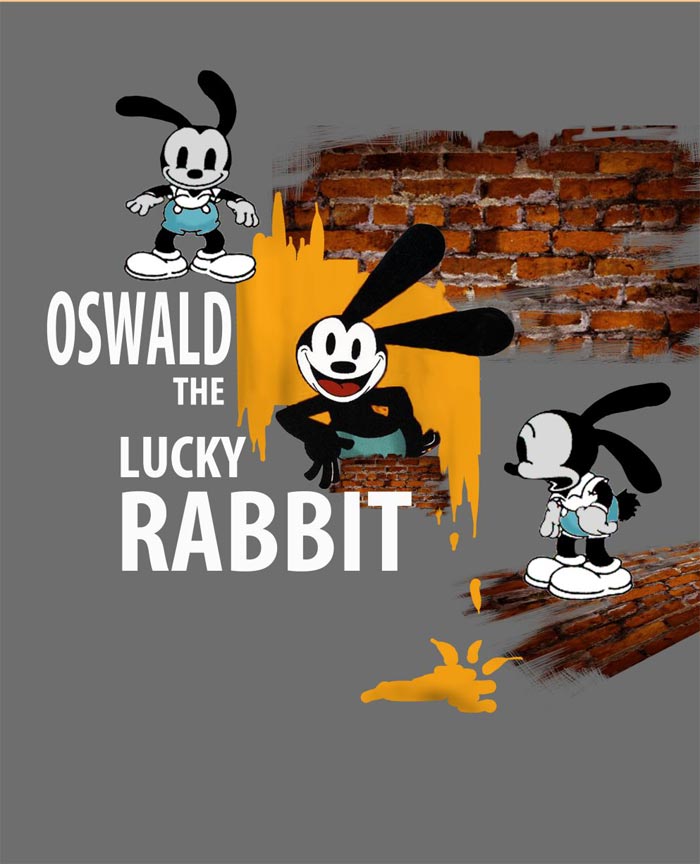
In 1927, Margret Winkler, their animation distributor married a tough business man Charles Mintz. Mintz immediately took control of Winkler’s distribution business. He renegotiated the terms with Walt, who was now not only paid less but expected to deliver more as well. Walt, at that time was not in a position to flex his muscle, so to keep his company afloat he accepted the new terms. This deal now gave more control to Mintz, who started exercising his inputs in animation, which turned out to be a boon for the company, as quality and production improved drastically. Mintz was happy with Disney’s work and offered a Universal Studios Project to create a new rabbit character and a series of short features. Walt accepted it and ‘OSWALD THE LUCKY RABBIT’ was born.
Walt knew the project was not feasible without a sizeable staff, so, renegotiating their terms with Mintz, Walt hired new animators and artists for background and foreground detailing. Roy, who till now was operating the camera along with accounts, got replaced by a professional cameraman. Walt himself stopped drawing and started directing the animation and they received $2250 for each short feature. The initial episodes did not impress the Universal Studio bosses, and Walt was in constant pressure to bring down the cost and increase his quality. Usually a friendly employer, Walt now turned into a bossy figure, which was new for his employees. He discouraged friendly chat during production time; even pranks which employees played on each other during office hours were banned. The moustache Walt sported throughout his life was also a part of an office bet he had made among his male staff– “who can leave their moustache unshaved for long”, obviously Walt won the contest but Lillian never allowed him to shave it off either!
During Oswald Rabbit’s creation, the environment became grim at the studios. Walt openly criticized his animators and sometimes even abused them. Behind his back, some of the key animators were plotting to start their own animation studio. Mintz, sighting this golden opportunity, lured many of Walt’s animators to work with him independently on ‘OSWALD’. After delivering 16 features by 1928, Mintz once again tried to exercise his business muscle on Walt, by renegotiating terms which meant lower pay and more output. Walt went to New York along with Lillian to confront Mintz; he smelled the conflict which Mintz was creating in his studio. This time Walt was savvy and confident enough to turn down Mintz’s offer and their contract expired within a few months. The character of ‘Oswald Rabbit’ created by Walt was now the property of Universal studios.

Birth of Mickey Mouse
On his way back from New York, Walt showed no sign of remorse. He talked about his idea of a new cartoon character, a cute looking mouse with big ears and a nose; he named it ‘Mortimer Mouse’. Lillian objected to the name and instead she suggested “Mickey Mouse”.
Voila! By the time the couple reached LA, many of the Disney staff was ready to quit his company and were planning to startup their own studio. Walt took Ub Iwerks in confidence and showed him the rough sketches of Mickey Mouse and asked Iwerks to create a cartoon in total secrecy. After delivering the final shots of Oswald, the contract with Mintz came to an official end. Walt again faced bankruptcy and to pay his remaining staff he sold his second hand car.
In the year 1928, a revolutionary breakthrough took place in the world of cinema with the arrival of the first talky film ‘Lights of New York’, produced by Warner Brothers. It was a huge commercial hit of the time. The visionary Walt, realized the potential of sound movies and wanted to make an animation film with sound and music. With no knowledge of the same whatsoever, Walt hired Wilfred Jackson, who was an expert in sound recording and music techniques. Wilfred worked on the very first sound animation cartoon of Walt Disney, featuring Mickey Mouse in ‘Steamboat Willie – 1928’. Wilfred and Walt together designed the flow of background music for the film; they devised a method in a graphical format, directing the conductor to compose music accordingly. They screened few trials for the staff and family. The first attempt of putting sound and music was a disaster which left Walt fuming. He realized that they wanted a professional conductor. Walt went back to Kansas City to meet Carl Stalling, whom he had met during his Kansas Film Ad stint. Carl was a music composer by profession with several film commercials to his credit. Carl accepted Walt’s offer and created music for many Disney films in the coming future.
Carl introduced Walt with many sound recording systems and together they narrowed down ‘Power Cinephone’ a recording system owned by a controversial music producer and film distributor, Pat Powers. Walt contracted with Pat Powers to produce his sound cartoon films. With good technical and professional backing, Walt Disney created “Steamboat Willie – 1928”. A perfect synchronization of sound, music and visual, ‘Steam Boat Willie’ hit the theaters of New York on November 18, 1928. It became a huge success and was applauded by the critics as well as the audiences. The movie ran for 13 days and Mickey Mouse became famous.

Walt knew that sound movie was now the future of cinema. A foresight Walt had developed over the years! Successful businessmen are not always lucky. It is their gut feeling and foresightedness which earns them good results.
To churn out more sound animated movies, Walt formed a segment ‘Silly Symphonies’ in 1929. Under this program, many sound films were created like the ‘Skeleton Dance’ which got mixed reviews from audience and critics. Many other animators tried matching Disney’s sound cartoons, but failed miserably. The reason being: the other studios thought sound films as a product, whereas for Walt, it was a platform to show his creativity. Disney cartoons leapt ahead of their time and won the audiences’ loyalty with creative visuals, cute characters and wonderful music and sound. With the success of ‘The Opry House – 1929’ Disney pictures created a sensation in the entertainment world. The studio expanded rapidly and many animators now wanted to work with Disney. Walt even installed ‘Powers Cinephone’ sound recording system at his studios, to overlook music composition personally. Within the coming months, Walt handed more power to his staff; Roy took care of the finances and administration as usual, Ub Iwerks worked closely with Walt on development of scripts and direction, and other key animators from New York handled Mickey Mouse cartoons. In spite of delegation of roles, Walt was the defacto boss of the studio and nothing went ahead without his say. Environment at the Disney Studio was friendlier then before and the young animators from New York loved their working place, resulting in a significant improvement in the quality and quantity of the animation. On many occasions, censors objected Disney’s cartoons, due to scenes where female character’s undergarments were revealed or sometimes enlarged udders of animals were shown. Walt thought that the censor boards were being too harsh. Walt was a rural boy and his humour was very raw, unlike his staff who had more of a sophisticated sense of humour. Disney’s studio was full of male staff, hence, Walt didn’t mind animating such scenes.
With time, Iwerks took over Silly Symphonies, and although he was the one who had drawn Mickey Mouse earlier, Burt Gillet, an experienced animator from New York was roped in to animate Mickey Mouse’s character. Walt’s idea was simply to pull out his employees constantly from their comfort zone. This was particularly his policy throughout his career; he believed too much comfort would make his animators lethargic. This was not the only human resource policy Walt adapted, he knew many of his artist’s were naturally skilled and had never attended a formal training. Walt approached the LA based ‘Chouinard Art Institute’ and struck a deal with the college to train his animators with fundamentals of arts on Friday nights. Walt knew that in the long run, the animators would lose their edge and only a formal training would keep them sharp and polished.
It is quite evident that Walt not only believed in his self progress, but also gave an opportunity to his employees to grow professionally and individually. Many of the old staff members were reluctant to join the art school and in order to motivate them, Walt bought a second hand car and personally drove them to school.
In the year 1929, America was struck with The Great Depression; the economy was down, money came in less, and as during the time of hardships, very few could afford going to the movies and the demand for Disney’s cartoons declined steeply. The cost of making cartoons also rose tremendously as supplies became short. Once again, the clouds of financial despair started looming above Walt’s head. To catapult his company away from the trouble, Walt came up with a brilliant idea of selling Disney’s merchandise. Walt contacted some of the stores in New York and started selling Disney character dolls, toys and novelties.
In February 1930, Walt Disney released comic strips and books. The artwork for the same was done by Ub Iwerks and later by an artist named Floyd Gottfredson. Walt particularly wanted his brother Roy to handle the print business operation. The revenue generated from this venture was very humble and at business front not everything was hunky-dory. Walt came to know that Pat Powers was swindling their profits from theater screenings and was not disclosing the correct box office collection. Ending professional ties with Pat Power, Walt approached Columbia for his Silly Symphony series and with their wide spread network in United States, money started pouring in at a slow, but steady pace. Walt invented new methods of increasing his production, by introducing ‘Inbetweeners’- a department full of junior animators who cleaned and added details to the drawings of seniors instead of them completing the whole drawing. Many senior animators were not used to this new technique and even a pro-animator like Ub Iwerks, hated the idea of someone else finishing his job.
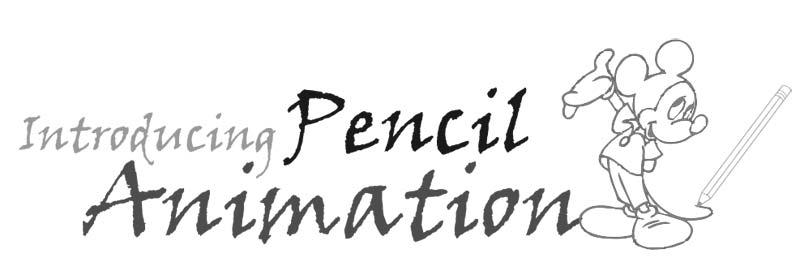
In the midst of economical crisis, Walt was finding it tough to raise funds for his company. His other headache was Carl Staller, the head music composer of Disney, who left his job after an argument with Walt over a particular sequence. He even tried to take away his composition but Roy intervened and things really turned ugly. It was a huge setback for Walt, but not the first one. Later, Ub Iwerks came one day to Roy’s office and gave his resignation. This came as a huge shock for Walt who was at that time in New York dealing with the distributors.
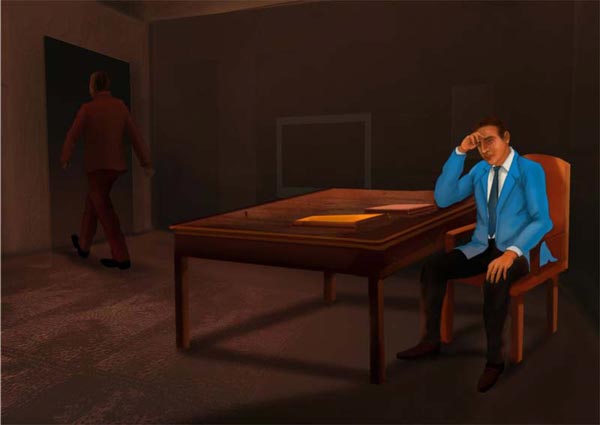
Later, the brothers came to know that Pat Powers had lured Iwerks and Carl to work on his home production, which however, never saw the light of the day. Walt was devastated as Iwerks was not only a partner, employee and a great cartoonist of the company but also Walt’s close friend. Iwerks and Walt gave the world such a famous cartoon character in the form of ‘Mickey Mouse’ and together they could have created many more miracles, but now he was gone. Walt became bitter as he knew that the remaining artists were not good enough and he hated sloppiness and lethargy. The great economic depression made it difficult to make more films. Walt often broke down, cried and lost his temper. Roy was worried about his brother’s mental and physical state, about which he often wrote to his parents. Walt was notoriously famous for his nocturnal visits in the studio at night, when everyone had left for the day. He would check work of each artist and if he found incompetency, he would blast the animator the very next morning on his arrival. For Walt, cartoons were not just a job, they were his life and now it was breaking apart. On Roy’s instance, Walt took a break and went for a holiday in 1931 along with Lillian. This rejuvenated Walt and after coming back he joined a sports club, where he tried his hands at golf, boxing and even wrestling. But it was polo which grabbed his attention. Walt loved the royal sport of Polo.
Filled with new energy, Walt returned to the studios and immediately delegated new tasks. He handed over the physically demanding work to his new directors Ted Sears and Webb Smith and he took care of only the creative decisions. He introduced ‘Pencil Animation’ instead of full fledged finished drawing. This helped in rectifying errors before starting the principal photography. Walt now dedicated his attention to work as a coordinator between different departments headed by different individuals. Walt hired a New York based animator, Norm Ferguson, with experience in the field for more than 10 years; Ferguson was known for his rapid speed. Walt wanted to fill the gaps which Carl Stalling and Ub Iwerks had left in the company and therefore, he often conducted Talent Hunt expeditions, bringing in wonderful artists to his studio. The biggest challenge for Walt was now to retain his employees at any cost.
Walt preferred the traditional style of drawings, but sometimes to speed up the process, animators applied shortcuts such as using coins for drawing Mickey Mouse’s ears, this technique made cartoon more rigid to animate. While implementing work flow, Roy and Walt signed their contract in 1932 with United Artists, a company which was co-founded by Charlie Chaplin.
The already established United Artist gave Walt Disney a bigger platform to distribute their short features of Silly Symphonies and other cartoons in America.

To end his staff and distribution headaches, Walt was searching to push the envelope of his cartoons and Technicolour was his answer. No other cartoon had ever been made in colour before and Walt wanted to be the pioneer of animation industry to use Technicolour. Very secretly, Walt signed a 3 year contract with the company, which gave him the sole rights to make cartoons in colour using their technology. Money wise, shrewd Roy was skeptical about Technicolour as he was quite aware of the previous failures of colour films. He knew, the success of colour cartoons would be more of a headache than a failure. Market was still down, money was short and here was Walt, experimenting with a technology, never applied in the field before. The costing of Technicolour films doubled their budget, but Walt had already made up his mind. The visionary was looking at the future cinema.
The work on first colour cartoon ‘Silly Symphonies’ began at the studios in secrecy. All this while, Walt was lobbying for inclusion of Animation Category in Academy Awards. On July 18, 1932, Disney created a history when ‘Flowers & Trees’ released in colour.

The film was received by audience and critics with open arms and Walt Disney became a celebrity. He won his first Oscar at the Academy Award held later that year. Seeing the results of their colour animation, Roy was now convinced and he too backed Walt to make more colour films, though the expenses of producing them was twice than a black & white film. United Artist opened new avenues of income for the company and with the profits Walt built a lavish home for himself and Lillian. In the midst of economic depression, Walt’s ways of spending money was criticized by the general public and media. Unfazed by the criticism, Walt stated that he was creating job opportunities by building this luxurious home. After the success of ‘Flowers and trees’, his next project was ‘Babes in the woods’. Walt always wanted an anti-hero character in his bandwagon of Silly Symphonies; soon it got a new member in the form of ‘Donald Duck’. An arrogant, short tempered, malicious, quaky duck wearing a sailor uniform spiced up Disney films. Since his first appearance in ‘The wise little Hen’ in 1934, Donald has been featured in more films then any other character in the history of Walt Disney Animation. Films like ‘The Vanishing Private’, ‘Sky Trooper’ and ‘The Old Army Game’ are some of the classic wartime cartoons.

Walt was not only a boss but also worked as a cheerleader in the company as he constantly motivated his artists to create wonderful animation. Walt always stayed positive and applied “lets go after it with vengeance approach” for his every new project. With things now progressing, Walt and Webb Smith devised a new method of pre-visualization of scenes, in form of ‘Story-Boards’. This was his greatest contribution in Film Pre-production and it is still used extensively.
Walt knew that the other animation studios were fast catching up and the demand for quality animation had escalated. He now trained his artists at the studios because of which their skills improved drastically. Combined with great drawing and stories, Disney’s cartoons stood class apart. Walt fed his animators with daily dose of enthusiasm and often his cartoons carried sublime messages and morals in the end. Walt believed, that cartoons were not only meant for entertainment purpose but they could also be used to evoke emotions and inspire people.
Later in the year, ‘Three Little Pigs’ was released and the timing couldn’t have been better. The story dealt with a situation where three little pigs are threatened by a wolf, but in the end they overcome their fears and face the big bad wolf. During its release the entire nation was going through the same situation, the big bad wolf [Bad Economy] was coming heavily down on Americans. The song “who is afraid of the big bad wolf” became a sort of an anthem for many people, who suffered loss during the economic turmoil. Even the newly elected president Roosevelt used “lets fight the big bad wolf” caption during his presidential campaign. Walt Disney’s cartoons filled his countrymen’s heart with optimism and confidence.
Walt constantly gave many ‘First’s’ to the industry. He incorporated 3D depths in his cartoons, gave naturalistic movements to characters, added expressions and special effects in scenes. Disney urged his animators to feel the character and situation while drawing. Many wonderful short features in colour were made post ‘Three Little Pigs’, like ‘Father Noah’s Ark’ which hit theaters during Christmas and was very successful at the box office. Walt’s films and company was in a great shape and Walt himself was prospering but not everything was wonderful like in his cartoons.
The couple was upset as Lillian had by now suffered two miscarriages. Finally, on December 18, 1933, Diane was born and Walt became a delighted father.
In 1934, an anonymous animator wrote to ‘Hollywood Citizen – Newspaper’ criticizing Walt Disney, accusing “that Walt Disney hasn’t drawn in decades, and has no direct or indirect contribution in animation, he purely looks after the business side of cartoon films and still gets credit for all of it”. The article was a direct assault on Walt and he decided that he would direct his next cartoon feature and he chose ‘The Golden Touch’, a story based on King Midas. The film was merely a warm-up exercise for Walt as his next ambitious project was ‘Snow White and Seven Dwarfs’, a full length cartoon film. The animators were shocked when Walt announced his plans. This was a mammoth task and financially difficult to produce, but Walt was as always adamant. Since childhood, he was fascinated with the story and only once in the history the story was made into a film, sponsored by Kansas City Star Newspaper, which Walt attended in 1917. Over 67,000 audiences witnessed the movie that year. The project of Snow White soon commenced, but no one had a slightest clue as to how they would be able to transmute Walt’s vision into animation. The working environment at the studio was very friendly, animators from different studios wanted to work for Disney. The company now employed more than 250 people. Several employee benefit programs were initiated by Walt, such as $25-$50 cash rewards for coming up with funny gags for cartoons, in-house training and night art schools.. Walt though friendly, was sometimes an intimidating figure. He set up a projection room where he screened ‘Pencil Animation’ for scrutiny and Disney’s animators termed the room as ‘Sweat Box’. Snow White was Walt’s baby and he made sure that every single frame of his directorial venture was up to his mark. Walt never praised his animators but never missed a chance to criticize them openly. Though harsh, this strategy always paid off as the quality of animation improved constantly. Walt’s other ways of reaching his underperforming artists was by sending them personalized memos, describing their faults, the scope and methods of improvements.
In 1935, Walt, Roy, Edna and Lillian set out to Europe for a month long vacation. Together they visited England, Scotland, France, Switzerland, Holland and Italy. Just like his cartoons, Walt Disney was popular among the masses, a celebrity to be precise and was invited by the Fascist leader Mussolini for a private audience during his visit in Italy. The two men spoke animatedly for hours. Walt knew, his cartoons touched the masses and he made sure that they always remained the same. Post vacation, Walt took up the command of his Snow White project. During meetings with his animators, he would enact a particular scene or mimic the characters so that while drawing, his animators got it right. While auditioning for the voice of Mickey Mouse, several actors were rejected and it was Walt who finally gave his own ‘falsetto’ voice to the character.
As Mickey was his alter ego, he continued giving his voice to Mickey for many more years to come.

During the animation of Snow White, the animators were finding it difficult to animate a real looking girl with right expressions. They were cornered and needed help; like always Walt came up with a brilliant solution. He implemented a technique which is still used today, Rotoscopy! A girl wearing a snow white costume acted in front of the camera, the film was then blown up to bigger sheet of paper and later traced by the animators.

This made things quite easy for the animators and increased their output. Though Snow White was Walt’s ambitious project, he was still worried about the rising costs and he urged his people to increase their productivity and reduce the wastes.
In 1937, tragedy once again knocked Walt Disney’s door; Lillian who was pregnant with her second child, suffered a miscarriage. The couple decided to adopt a baby girl and they named her Sharon. Walt’s family was now complete and he spent more time with his daughters and worked late at nights in the studio.
Prior to Snow White’s release, Walt was in a constant pressure as both the critics and audiences commonly paired Walt and Charlie Chaplin as two great Motion Picture artists. Walt was carrying a huge responsibility and he did not disappoint his fans when ‘Snow White and Seven Dwarfs’ released on December 21, 1937. The film was screened in Los Angeles, Miami and New York. Once again, the critics and audiences left the theaters with a big smile on their face. The movie was a nationwide success and it grossed over $4 million at the box office. The following year in 1938, Walt Disney was honoured from Yale and Harvard University, with ‘Masters of Arts’ degree. Walt once told a reporter, that way back in 1923 when he said that he was an animator; people looked at him as if he was saying “I sweep latrines or something.” Snow White won the Academy award in 1938 for the best animated picture. Post ceremony, a reporter asked Walt whether he made films for children? Walt promptly replied, “A child shouldn’t be in theater at all, I made it for adults….for the child that exists in all adults.” Walt Disney since the very beginning believed that his cartoons evoked emotions and changed people’s life. And now entirely convinced, he called his animation ‘Characters of life’.
After the success of Snow White, Walt Disney’s private and professional life soared and he was now a Hollywood A- list celebrity. He went on tours with his wife and regularly attended Hollywood soirées, hub-knobbing with actors and big time producers. Walt even played polo with his friends from Hollywood on weekends. During one such game, Walt was struck with the ball on his neck and was seriously injured. After recovering from his injury, doctors advised him to play a less physically enduring sport and so Walt chose Badminton. After the 1931 emotional breakdown, Walt always made sure to unwind himself amidst nature, so he often went for camps of ‘Los Ranceros Visita Dores’ where he would ride on horses along with his friends, and camp in woods or sometimes in rocky terrain. Walt often invited Roy and some of his key animators to such trips, and even here Walt would brief his animators. Walt was not a serious person all the time and ever since childhood he was known to play practical jokes. Once during their trip in valley, one of the fellow man, who was a stone deaf and relied on battery operated device for listening, fell prey to Walt’s prank. In middle of their trip, Walt and his men pretended to speak, but they were actually moving their mouths, the friend thought his hearing machine was dead and threw it down the valley.
In 1938, Walt and Roy bought a plot and constructed a home for their family and soon moved into it. In November 1938, they called their parents from Oregon to stay with them. On the morning of November 21, a defective gas furnace leaked and their mother Flora died of gas poisoning and Elias was taken to the hospital in an unconscious state. The brothers were devastated; the dark era of Disney had arrived!

On the professional front, the company had grown over the years, now employing more then 675 people. The business needed close attention and side tracking their personal setback, both the brothers moved on. The company now signed RKO Radio Pictures for distributing their major films. Walt emphasized on making his films on a lavish scale. He incorporated ‘Multiplane Camera’ setup for creating 3D depths in his films, changing the entire visual treatment of animations forever. Walt never worried about the cost when it came to quality and if certain results were achieved, he would personally recommend bonus for his staff or an employee. Walt had now become a result oriented master. With an ambition to make the greatest animated movies, work on ‘Pinocchio’, a story of ‘a wooden doll who wished to be a real boy’ started, but since the beginning of the project, problems arose. There was lack of coordination between the animators and story department; midway in the project the animators drifted from their brief and though Walt tried his best, it was too late. When the movie finally released in 1940, the response from critics was far from good, audiences did like the movie, but it was not a Snow White. The success of Snow White now turned into a headache. Expectations were way too high, the box office collections were poor and with Europe engaged in World War II, the overseas profits never came. The company was once again in heavy debts.
Roy convinced Walt to take their company public and on 2nd April, 1940, preferred stocks of Walt Disney Production were offered. With the raised money, the company cleared its debts of $2 million and also began work on a larger studio at Burbank, at a whooping cost of $1.6 million. The common shares of the company were held by Walt and his brother Roy. Walt Disney was insured for $1.5 million, as he was the key asset of the whole operation and the company. By the end of 1940, more then 1200 employees worked at Walt Disney Studios and the company grew manifolds. Walt now made rare appearances at the studio. He was a hard man to reach now with very limited contact and his artist’s often found themselves in a tight situation. Walt was their source of inspiration and motivation and they craved for his guidance at every step. But alas! He was now absent!
Walt was not getting tired or rusty, he was simply searching for the next big thing; the showman was enduring to put forward a great spectacle.

The company hadn’t produced a single feature matching the expectations of audience since ‘Snow White’ and Walt was confident that his new film ‘Fantasia’ would do just that. This proved to be a fatal error of judgment on his part. The film comprising Orchestra Music and abstract animation was made at a whooping cost of $1 million, but it sunk at the box office. The problem was not with the content but the era, he had made a film far early from its time. Usually made for the masses, this particular motion picture attracted only the class audience, who simply loved it. With the film’s failure, the company was now again under huge debts. To cut down costs, layoffs were necessary and many films-in-production were stalled. The remaining artists now demanded a raise as their work load had increased. Walt was never against bonuses; in fact, he was always the first one who promoted his staff when quality was delivered. But now as the company was already under financial crisis, Walt described their demands criminal. The staff then approached their Union Leader who happened to be motivated by the Individuals of Communist ideology. On the Unions’ instance the workers went on strike. Walt fought back as he had never submitted to bullies before and would not submit now! Walt refused to bend and he tried his best by calling his workers in the studio auditorium and giving a heart rendering speech describing how he had started the company and how they could take it forward together. Walt justified his stand on the grounds of financial crisis, but to no avail. The issue escalated and court trial took place. It was not a matter of ego for Walt. It was a matter of principles.
Finally, in July 1941, both the parties came to a common conclusion and the workers ended their strike and returned to the studio. By the time the production resumed on ‘Bambi’, the company was already under a debt of $3.5 million. Initially, after the movie released it was termed as a disaster, as World War II kept away the audiences and distributors as well.
In August 1941, the Government of United States sent a delegation on an all expenses paid trip to South America, for strengthening ties between the two American Continents. Walt Disney was a part of this contingent. With the group, Walt visited Cuba, Argentina, Mexico and Brazil, and he took reels of his animated films along and held many screenings throughout his trip for the locals. The impact of Disney cartoons was universal and he and his crew did some shooting in Mexico, Cuba and Brazil. Walt’s marketing mind was already spinning and his idea was to make a documentary on these countries and package it with custom animated characters and release them in US and in their respected countries. It was September 13, 1941; Walt was in Buenos Aires when he learnt that his father Elias had died of natural causes. Walt was once again struck with grief. On his return to the studio, he was shown a scene from a low budget animated feature ‘Dumbo’. The animation was very much unlike the Disney’s traditional style, there was no detailing in animation whatsoever, it lacked the finesse and the animation really looked sloppy. Walt was least interested in the feature but the movie turned out to be a huge success. It was not the animation but the emotional content which sold the film to audiences and critics. The money generated was not enough, but it was still way better than the rest of his films. With Dumbo’s success, Walt showed signs of optimism and he sensed a possibility of turning things around for the company. His dreams where squashed when Japan attacked Pearl Harbor on December 7, 1941.

America which had until now enjoyed its share of peace, was forced to enter World War II. Things at the studio turned dramatically as due to its location, the US Air Force moved Lockheed [now Lockheed Martin], an aircraft manufacturing company into the Disney Studio campus. They were given an unused space of the studio building. Many a times the staff was made to work in blackouts, sighting danger of an enemy air raid. The animation production was totally stalled. The desks of animators were replaced by aircrafts technical designers. Walt Disney was yet at his entrepreneurial best and he struck a deal with the Canadian Army to make Training Films for his soldiers on the use of anti-tank guns. Walt even made WAR BOND Commercials for Canadian Defense department. With the United States now engaged in war, the US Defense department asked Walt to make training films for the Navy, which would help it’s sailors to identify enemy aircrafts. A cartoonist at heart, Walt did not enjoy making such serious military films but he made it for love of his country and the finances which he needed very badly. The other reason as to why he hated war films was the Military officials’ constant interference in creative aspects of the film. Over the years, Walt held the reins of his films at his studio, but now Captain Raymond F. Farewell was in charge. He virtually lived in Walt’s private cabin till the war was over. In 1942, Walt Disney received ‘Irving Thalberg Award’ for consistent high level of quality of his films. While receiving the award, overwhelmed with joy and emotion, Walt had tears in his eyes and with great difficulty he said “I wish to thank everybody here, this is a vote of confidence from the whole industry.”
Due to lack of good animators, Walt focused on the documentaries which he had made during his South America tour and released these movies in America. They turned out to be a huge success. Walt was now inclined towards Live Action Documentaries, coming usually from the Defense and Agricultural department. Walt created films for Aircraft manufacturing companies, showing ‘Aircraft Production Methods’.
1943 was a very productive year for Walt Disney as he was engaged in many Live Action Documentary Films. However, the inner cartoonist ached for animation and to soothe his pain, Walt produced a feature length animated movie ‘Victory through Air Power’. The film advocated reliance on long range bombers to defeat Axis Powers. Post its release, Walt was in tremendous pressure from Navy and Army to stop its screening due to its sensitive nature of content, but Walt went ahead with it. United Artist, who distributed the film, suffered a huge loss of $450,000 due to poor turnout of audience. Disney was loosing money in animation, despite it being its forte. Once again Walt resorted to the South American documentaries combined with animation, but his second documentary ‘Three Caballeros’ based on South America, lost $200,000 at the box office. Walt had no choice but to stick with Military and Corporate Films and he made many trips to Washington in order to receive brief from the Warfare Department. Disney’s Military films always went under scrutiny by government officials prior to their release. Foresighted Walt knew that even during peace times, Industrial and Commercial Films would stay in demand and in 1943, he setup a separate division for corporate films at Disney Studios. The move soon paid off and Walt bagged five training films contract by approaching some of the leading companies like General Motors and Westinghouse Electric Company. Money started coming in and this time Walt was cautious in his spending. He still preferred a can of chili beans over caviar!
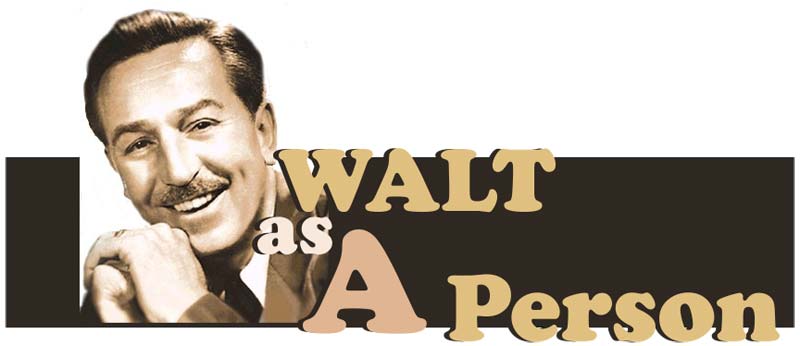
In the mid 40’s, Disney’s short animation features took a back seat as Walt was least interested in making them. Many other production houses came up with more aggressive cartoons like ‘Bugs Bunny’ by Warner Brothers and equally successful ‘Tom & Jerry’ by MGM and the audiences too had happily switched their loyalty. Walt now spent more time with his family and was a very attentive and caring father. He drove his daughters to school and back home every day and on Sundays he would take them to the zoo and parks. He would also take them to the studios, where the girls learnt roller skating, cycling and later even car. Walt was under tremendous pressure from government and other production houses, but it never showed on his face. Back in office, Walt was totally a different man. He was known for his ill temper and would lash out without warning or simply walk away if he didn’t like the idea. He was very moody, sometimes gloomy and sometimes filled with tremendous energy and charisma. At times, Walt would excite his animators by selling them their very own idea which few hours ago he had openly rejected. During weekly meetings, animators used to analyze his body language to guess his mood; if he started drumming his fingers then it meant ‘you are in trouble’. Walt openly used profane words like ‘Damn’, ‘Hell’, ‘Fanny’ but his favourite one was ‘Oh shit!’, he used them deliberately to put his female staff in an embarrassing position. Walt also made sure those words never appeared in transcripts of the meeting. Later in year, Walt regularly took his animation reels home to analyze and sometimes simply to show off. His daughters were his biggest critics and they often engaged in scrutinizing Walt’s films, which he hated to the core.
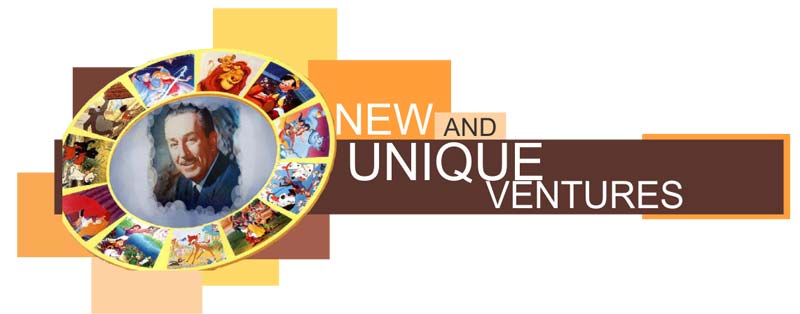
In 1944, Walt became a founding member of ‘Motion Pictures Alliance for the Preservation of American Idealists’. The committee discouraged communism to spread its tentacles in the country through films. Walt served as the Vice-President of the organization for many years to come. Post war, the country was rebuilding itself and Walt too wanted to get back into full length animation features. However, Roy opposed his ideas as the company was now answerable to shareholders and this move could put the company at risk. Roy was true in his own stand, but Walt was an artist and he never understood the mumbo-jumbo of finance. One night, a huge showdown took place in Roy’s office regarding the feature length animated films which Walt wanted to make. Both the brothers did not sleep that night and the next morning Walt dropped in and reconciled with his brother by cracking a joke. They started working on ‘Alice in Wonderland’ and ‘Peter Pan’. Though the films didn’t lose money but they didn’t even gain enough to call them a huge success.
In 1948, Walt Disney purchased the rights of an amateur film on Alaska, shot by a married couple. Adding a narration and fine tuning the editing, ‘Seal Island’ was released with a meager budget of $86,000. The movie made $434,000 at the box office. Part reason to make a documentary on Alaska was Walt’s personal near death experience in the region, when his aircraft once lost control and had to make an emergency landing in rocky terrain. Just like ‘Silly Symphony’, Walt created a division ‘True Life Adventures’- a series dedicated to wild life documentary. Their next venture ‘Beaver Valley’ made on a tight budget of $102,000, earned $664,000 at the box office and the documentary even won an Oscar in 1948.
Post war, Walt began showing less interest in animation and he spent time at home or in office playing with his miniature trains. What others felt as a spurt of childishness, was in fact a full fledged obsession. Since childhood, Walt was fascinated with trains and unlike his childhood days, he could now buy his own toys. Walt wanted to build his own train, 1/8th size of the real thing and he even setup a mechanical workshop in his house where he worked along with professional mechanics and learnt many new things. The head mechanic, remembered Walt as an impatient rookie with a great memory. Walt learnt things quite fast and he built small trains and tracks 1/8th size of real one. This job humbled the otherwise flashy Walt Disney as it was almost thirty years that he engaged in physically demanding work. After finishing his office hours Walt would rush home to play with his trains. In 1950, Walt and his men laid a 1400 feet long track in his backyard. It came at an astounding cost of $50,000 which was way too high an expense to spend on a hobby. Walt now owned the most expensive toy in the neighbourhood and he invited his friends to ride his trains. To give a nostalgic experience, Walt’s train ran on steam rather than electric motor. After the rides, Walt used to tend ice and soda fountain bar built at his home and served refreshments to all his guests.
At the studio, Walt handed over the reins of ‘Cinderella’ to his key animators and the film was made with a monstrous budget of $2.2 million. Post release, the movie was well received by audience and collected huge money at the box office. The movie did great even overseas, especially England. Post World War II, the money exchanges between two foreign countries were restricted as the governments made sure no money went out of the country. It was an economic move to rebuild the nation devastated by war. With the pounds stuck in England and their non-conversion into dollars, Walt once again showed his true genius by making films in England and releasing them in United States and England simultaneously.
At the US front, television was slowly but gradually becoming a sort of threat for the film industry as every major studio was getting into television show production. Disney brothers were keen to have their own show on television and they applied to ‘The Federal Communication Commission for TV and Film Band South California’ to seek license for production of TV shows.

Back in England, the production of Disney’s first live action movie ‘Treasure Island’ began in 1949, but Walt was least involved in the project and he gave complete control to the film director. The movie released in July 1950 and was an instant hit, earning $4.8 million. With this, Walt proved that he could make serious full fledged Hollywood movie too. The ambitious Walt soon began working on ‘Robin Hood and his Merry Men’. For this project he left no stone unturned and every minute detail of the film went through Walt’s scrutiny. His attention to detail was excellent, and the directors would receive Instruction Bibles along with the story board of the film from Walt. The film was being shot in England and with air travel now easier, Walt would drop at films sets without warning to meet his directors and actors. Walt Disney’s next two movies, ‘The Sword and the Rose’ and ‘Rob Roy The Highland Rouge’ were made in England. Walt eagerly wanted to make movie back at home in his Disney Studio. His next ambitious project to be shot in United States was ‘20,000 Leagues’ which was complete with action, adventure and special effects.
The sudden migration of interest from animation to live motion films was a tactical move and ‘Cinderella’ which was made on a flamboyant budget of 2.8 million, grossed $85,000,000. This was a huge success since ‘Snow White’. The profits generated were used to produce more live action movies.
In 1950, NBC aired the first episode of ‘One Hour in Wonderland’, where Walt made an appearance on TV along with his daughters. He saw TV as a medium to promote his films and other products. Cartoons and TV shows were in high demand at that time, which led to extreme competition from other studios. To unwind from his hectic schedule, Walt engaged himself with different hobbies, this time making miniatures. On his trip to Europe, Walt would often buy miniatures and toy trains. Walt created old grannies cabin and stuffed it with his mini creations. He shared his hobbies and interests with his younger sister Ruth via letters. Walt’s miniature collection was put up during the California festival and happy with the response it got, Walt decided to show his creation nationwide by renting a train, but it turned out to be very expensive. Walt wanted to create a place where families could go and relax in midst of nature. He wanted to setup a park, both for the children as well as adults, and therefore in the general meeting of Board held in 1952, Walt proposed an idea of creating a ‘Mickey Mouse Park’ in the campus of Disney Studio, where employees could come in with their families and see how cartoons and films were made. This would be a place where little children could play on the green lawns and hop onto small rides. But the area approved by the board was far smaller then what Walt had envisioned. Walt wanted to make a theme park like never seen before. Roy was skeptic with his brother’s plan; after all, they were filmmakers and not real estate developers. Walt knew that the board would never approve his grand plans, so in 1952, he formed ‘World Disney Entertainment Company’ which was later incorporated as ‘WED’ in 1953. Walt invested his personal income of $100,000 into the project, which worried Lillian like always. She felt that though they were doing well, yet, it was not good as compared to Hollywood standards.

Back at the studio, the top creative directors conceived the idea of ‘Alice in Wonderland’, a full length feature. No other studio since Walt’s earlier Black & White version had touched the classic fairytale. Enchasing the success of ‘Cinderella’, the movie was released with great fan-fare and a bigger budget of $3 million. The verdict of the film was demoralizing as foreign critics accused the studio of ‘Americanizing’ the concept. The box results further disappointed the producers as it recovered only $2.4 million.
WED was privately run by Walt himself and he took away some of the finest artists and technicians from Walt Disney Production to WED. This way he would exercise his powers and create projects he was interested in. He even appointed “Stanford Research Institute (SRI)” to find a perfect location for his theme park. The very same year, Walt’s most ambitious and expensive film ‘20,000 Leagues’ was released in cinemascope to win back the television audience. The movie generated tremendous revenue and was a huge success.
Six months after hiring SRI, a perfect location of 160 Acre deserted plot for theme park was selected and the board finally gave its nod for ‘Disneyland’,
“ a place for parents and children to share pleasant times in one another’s company, a place for teacher and pupils to discover greater ways of understanding and education. Here the older generation can recapture the nostalgia of days gone by, and the younger generation can savour the challenge of the future. Here will be the wonders of Nature and Man for all to see and understand.”
Disneyland was not only meant to be a theme park, but also a studio from where TV shows were supposed to air. However, the company was running short of funds and Roy was negotiating with many major networks like – ABC, NBC, CBS and DuMont. NBC and CBS were already topping the charts, Dumont was sinking fast and ABC was desperate to be in the TV business. Walt and Roy had already approached banks that did not identify with the idea of Disneyland and found it impractical. The only option now was ABC network and after months of negotiation, a package deal was singed with ABC, in which ABC got 35% share of Disneyland, 1 hour weekly TV show and profits from food concessions for 10 years. This was the biggest programming package ever in the history of television industry.
Soon after the deal was signed with ABC, Walt sent his WED staff throughout the country, to conduct research on different themes parks and study how they operated and generated revenues. Walt hosted the TV show in 1954, where he promoted Disneyland and his upcoming films. ‘Davy Crocket’ was one the famous shows of Disney, and Walt promoted the show by sending his lead actors on road show and public appearances.
On July 17, 1955, Disneyland opened with great fan-fare in Anaheim, California. There were rallies, rides, cafes and parks for everyone. But the opening was a disaster as many of the rides broke down; many visitors managed to enter on counterfeit tickets and due to hot weather the cold drinks got finished etc. But for Walt Disney it was a dream come true. As a child, he had played with toys of others and now he had his own toy land!! Within seven weeks, over a million visitors paid visit to Disneyland, almost 50% more than their expectation. In the long run the theme park turned out to be financially successful.
Now setting his attention back on his roots, Walt concentrated more on films, TV and documentaries. But in 1959 Walt’s interest in TV dropped rapidly. In 1960, Walt switched his network from ABC to NBC which broadcasted its shows in colour. They got themselves a Sunday morning slot, and ‘Mickey Mouse Club’, a popular show was formed.
Walt now wanted to create a new theme park, but he never got carried away and kept a constant vigil in all his businesses. Walt made sure nothing passed without his approval. Post war, Walt spent more time in looking at the final product and giving his approval. He read only the scripts and after briefing, he would give reins of the films to his directors. Once the films were shot, he would sit in the ‘sweatbox’ and scrutinize the rushes [film dailies]. Walt never missed anything, not even a small line in a dialogue. The part reason for his control over the films was that none of his live action films were ever nominated or won an Oscar, not even the actors who worked in his films. This soon changed in 1964, with release of ‘Mary Poppins’ a film based on children’s story book. The movie earned $44 million dollars and won five Academy Awards in the same year.
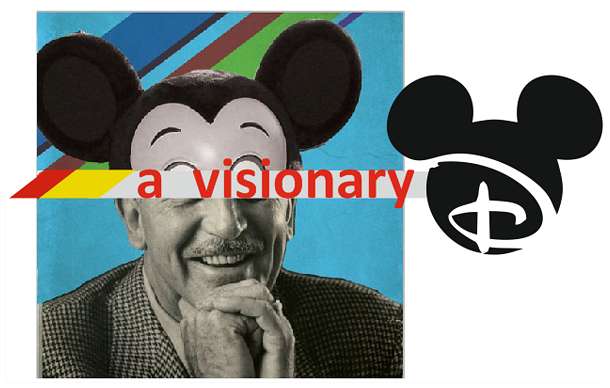
In 1960’s, Walt became more sophisticated than ever before. He lost his farm boy traits and people found him more intimidating and Walt was too well aware about this. His alcohol and cigarette consumption increased and he had developed sinus and was under treatment. His topics now surrounded around finances, Picasso, luxury toys as such. But Walt was still a great conversationalist and would start talking to anybody and excite them with his ideas. At times, he would be lost in his own world only to be brought back by the cigarette burns, which he would be holding in his fingers and forget. He was in his 60’s now and quite restless, irritable, moody and always sought an audience.
Walt cared a lot about Disneyland and during his weekly visits to the park he would ensure that the visitors were having a great time. He would constantly give his inputs to tour guides and ride operators and if he came across any litter he would put it in the trash can himself. In his retirement stage Walt was still filled with boy like enthusiasm. He was fascinated with science and technology and his new field of interest was now ‘Robotics’. Walt hired a team of artists and electronic experts and called them ‘Imaginers’ who created many attractions for the theme park. During his visit to The Imaginers Lab, Walt would get excited to see prototype of robots which he named Audio Animatronics.
During the World Fare 1963-64 held in New York, Walt Disney was contracted to build pavilions for General Electrics and Ford and he created many attractions for the year long exhibition fare. One of the key attractions was Animatronics Puppet of Abraham Lincoln, which welcomed the visitors with speech and gestures. Walt knew he wanted this attraction in his theme park also. The ‘Pirates of Caribbean’ show was designed featuring Audio Animatronics and it was a huge success. The puppets took place of many live animals in the park, which looked funny and amazed the visitors. In 1964, Walt Disney received ‘Medal of Freedom’ – The highest honour given to an American Citizen by the President.
In 1965, on 10 years ceremony of Disneyland, Walt expressed his gratitude towards his staff and people who had collaborated for his project. Walt now wanted to give something back to the society and young generation artists. In order to do the same, he founded ‘CalArts’ institute for music, art and filmmaking. All this while, Walt Disney was toying with the idea of a second Disneyland in Florida, which would be twice as big as the first one. He named it ‘EPCOT’, housing not only futuristic theme park but also a business center and a town ship strictly on a rental basis. A township which would have its own public transportation system, a monorail and trains. The animator turned filmmaker was now a real estate developer. Both the brothers where excellent negotiators and while Roy showed his financial prowess, Walt floored the audience with his charisma. Walt Disney’s name alone opened several doors in government and big corporations. Walt gave presentations on his private plane to investors and developers and would often visit schools, hotels and shopping malls for inspiration for EPCOT.
Walt, in his mid 60’s, was working seven days a week, reading scripts, dealing with artists, meeting contractors, bureaucrats and engineers. His health and relationship with Lillian deteriorated and on numerous occasions their fights escalated. Walt now spent more time working in the office. Even his relation with Roy entered murky waters and they argued a lot. Roy wanted Walt to merge WED with Walt Disney Productions due to operational and financial reasons, but Walt off late had grown possessive about his private company and wanted to keep control of his new venture. After constant pressure from Roy, Walt merged his company with Walt Disney Production. Walt’s another ambitious project was Mineral King Ski resort, which never materialized.
On June 23, 1966, Walt took his brother, wife, daughters, their husbands and grandchildren, his entire family on a private yacht to British Columbia for two weeks. But like always, he took work along, reading scripts and analyzing EPCOT’S drawings. Walt wanted his sons-in-law to join his company. Soon after returning from the holiday, his old polo injury resurfaced and on November 2, 1966, he was admitted to hospital in secrecy, where X-rays revealed a walnut size of cancer tumour in his lungs. The tumour was removed successfully but Walt’s health was very fragile. Soon after getting discharged from the hospital, Walt went to the studios but he was in terrible shape. On December 11, 1966, Walt was re-admitted in hospital and here too he was engrossed in planning his futuristic city EPCOT. Four days later on 15th December, 1966, Walt Disney breathed his last. Roy as always was by his side, massaging his foot and with great sadness he said, “Well, kid this is the end, I guess.”
Lillian and Diane couldn’t meet Walt, as he died just seconds before their arrival. The whole industry mourned his departure and back at the studios the employees wept as if they had lost a parent. Artists illustrated mourning Disney characters. The entire Hollywood bid him a tearful goodbye. The greatest showman was gone! Walt’s body was cremated on December 16, 1966.
Roy resumed his daily operation at Walt Disney Production. The EPCOT project was shelved, but after constant assurance from company designers, the project was kicked off. EPCOT finally opened in 1971 in Orlando, Florida, but different and more futuristic from what Walt had imagined. One of the four theme parks at Walt Disney World Resort, EPCOT theme park sprawled across 300 acres—twice the size of the Magic Kingdom park—and was divided into Future World and World Showcase. After some months, Roy too passed away.
Since 1970’s, animation has come a long way. Technology like 3D Computer Graphics [CGI], Motion Capture and now Stereoscopic 3D has given us many blockbuster movies like ‘Ice Age’, ‘Avatar’ and ‘Adventures of Tin Tin’.
Earlier the animation was aimed for children, now adults are the new target audience. As far as the animation industry is concerned, the coming decade will be exhilarating. We have already reached the realms of 4D Animation, which is currently restricted to amusement parks. The next big thing could be 5D animations where one could be part of the CGI world, hearing, seeing, or maybe even touching the characters. The holographic 3D visuals which till date are only featured in science fiction movies could be soon a reality.
The Disney Studios and entertainment business is now run by a great team of corporate honchos, led by Robert A. Iger, President and CEO of The Walt Disney Company. The company now holds stakes in ESPN, ABC, Pixar and Marvel Comics. Since Walt’s departure many famous characters from films like Little Mermaid, 101 Dalmatians, Tarzan, Aladdin, Beauty and the Beast, etc. have made a permanent place in our hearts and imagination. Characters like Uncle Scrooge, Chip-Dale, Iago, Genie, Baloo, Mowgli, Jasmine, Ariel, Louie-Douie-Houie, Goofy, Buzz Light Year and Darkwin Duck are immortal. The new team is making sure that the magic of Walt Disney always remains there.
Evidently, a maverick filmmaker with his league of extraordinary animators will mesmerize us and the coming generations with a whole new movie experience, but the world will only remember the greatest showman of all time…. Walt Disney!

Next Biography





